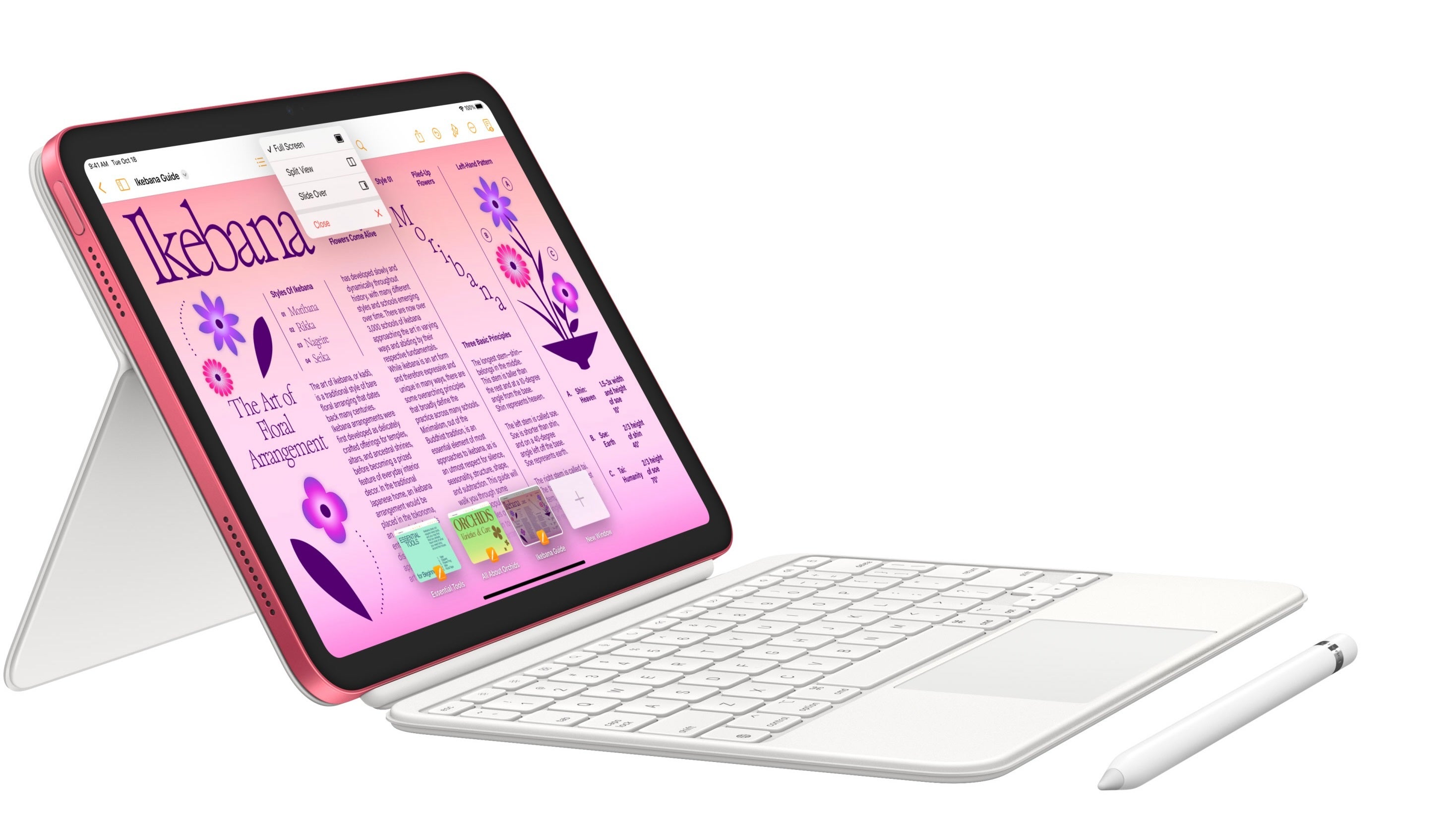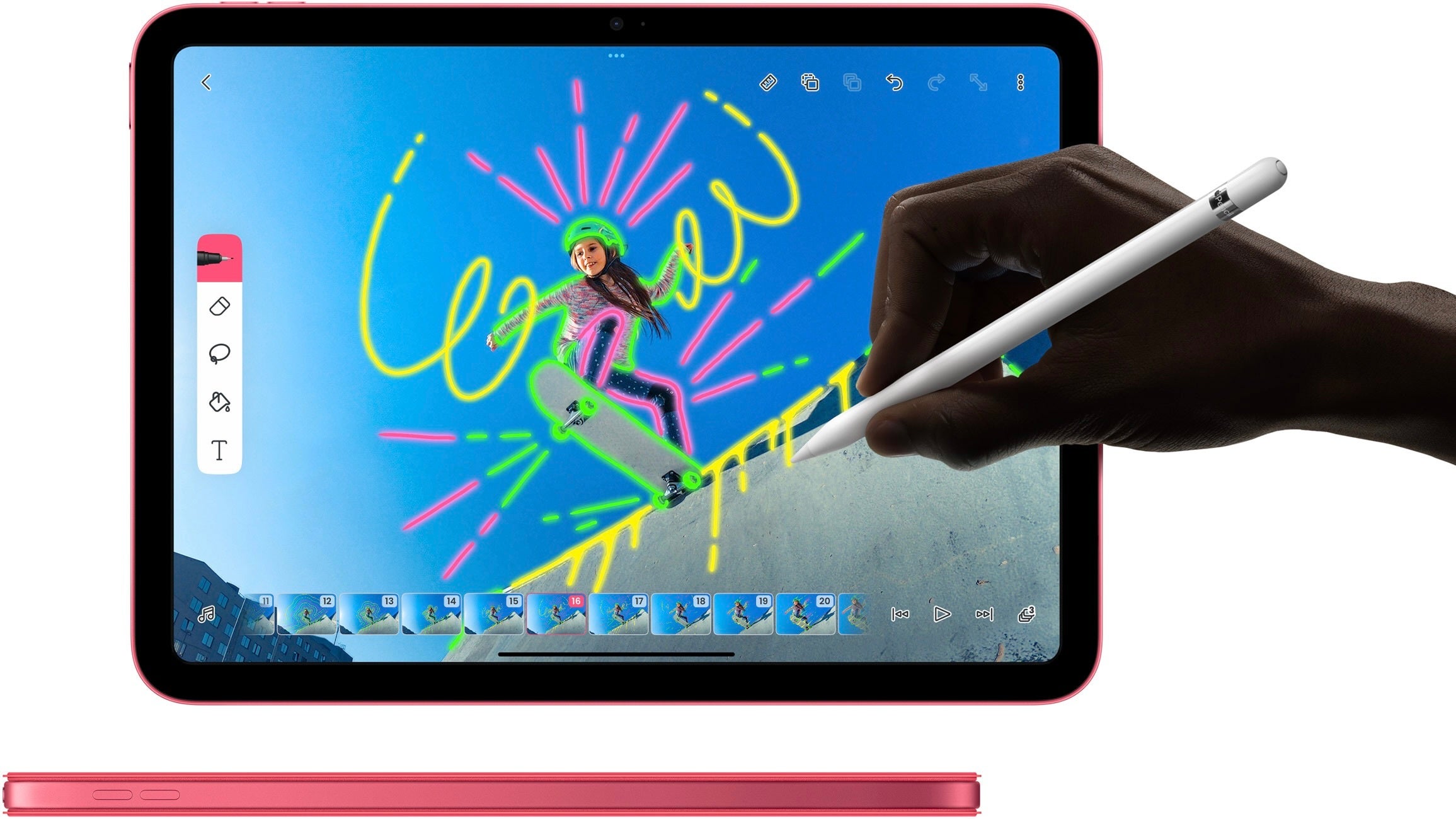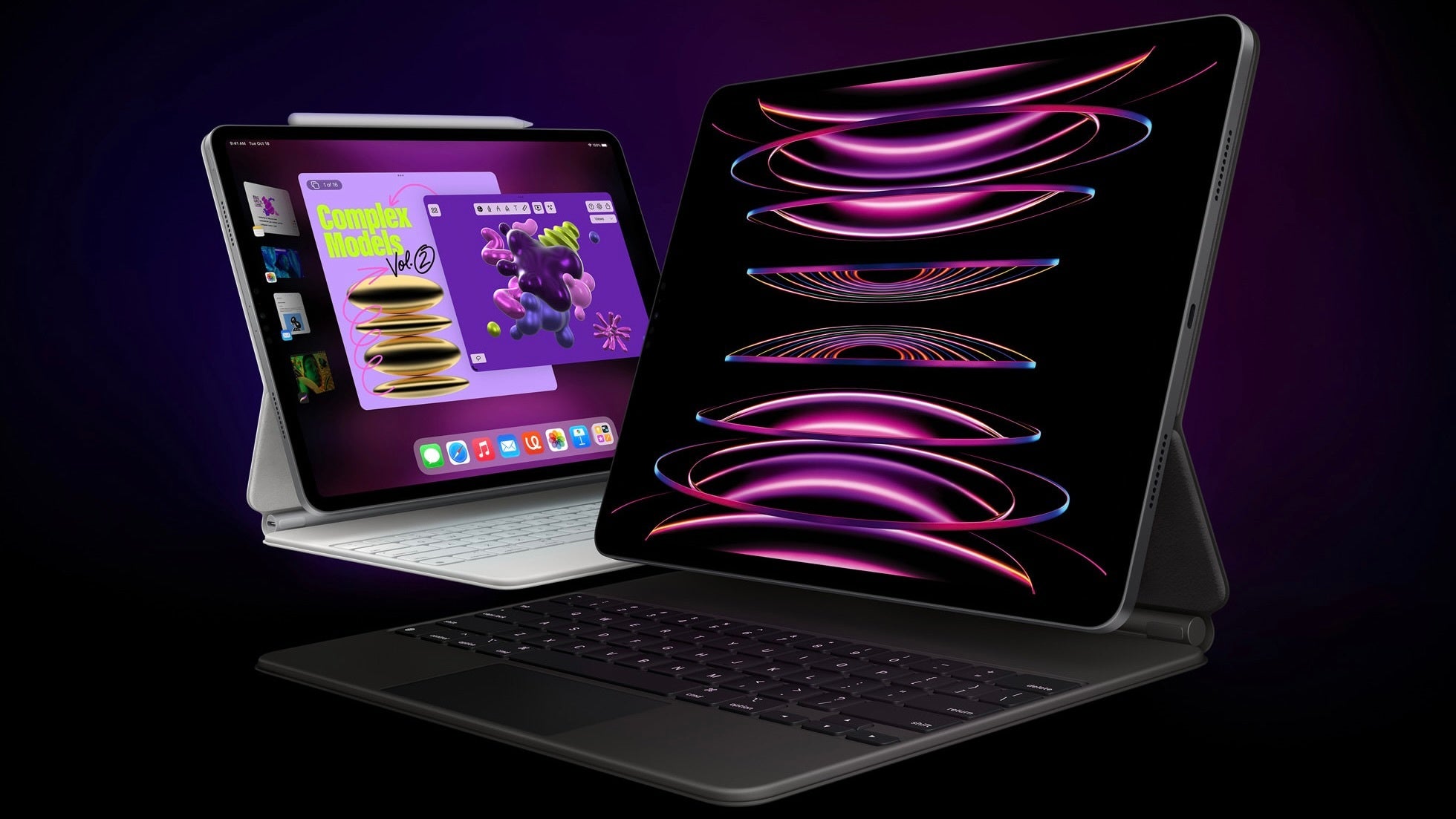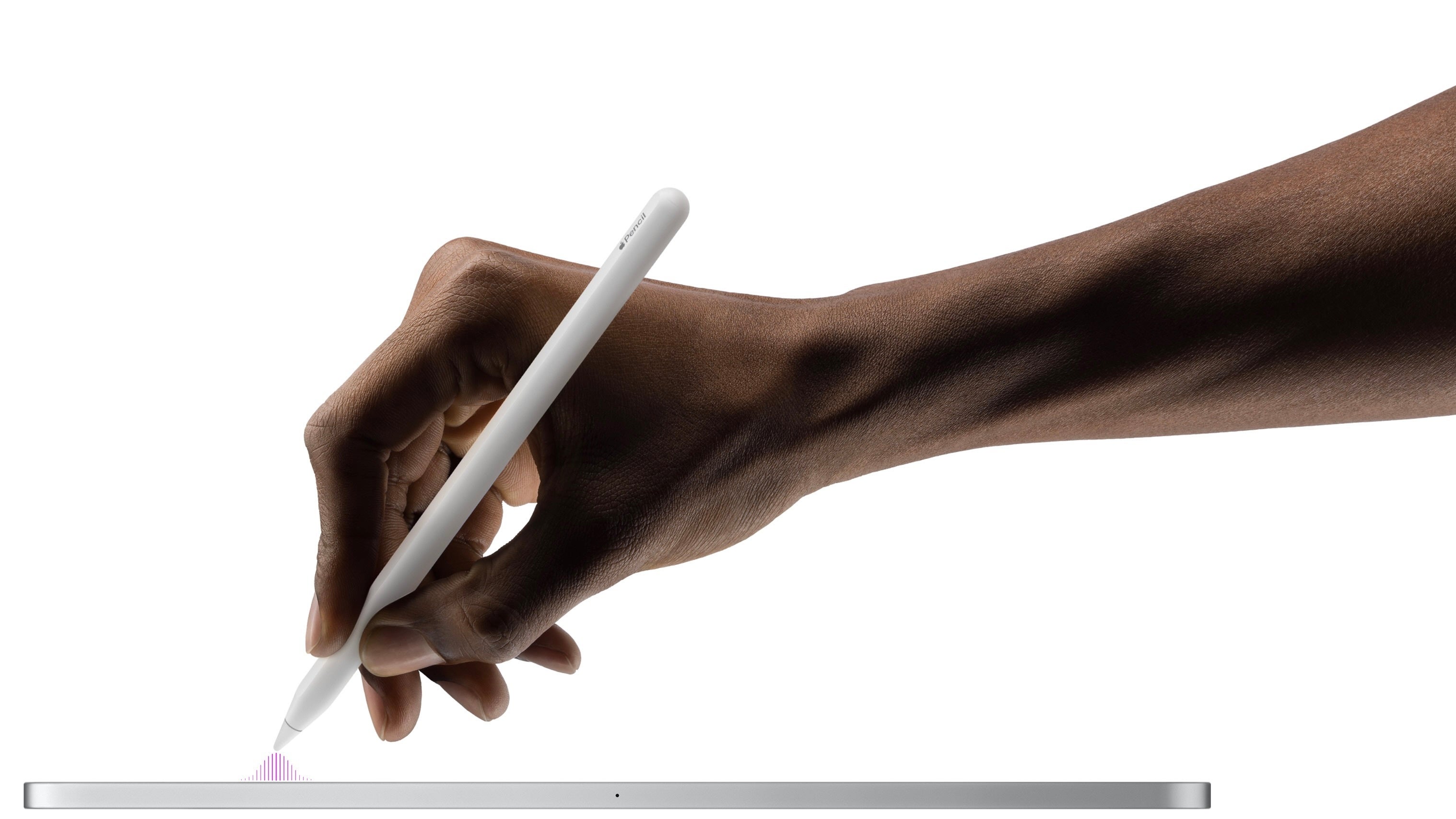Apple breaks the iPad lineup! 10th gen iPad doesn’t make sense, and the new iPad Pro fails to impress
In fact, the only thing they break is Apple’s current iPad lineup. To be fair, the lines between the different iPad models have been blurred significantly over the last couple of years. Now, with the “new” iPad Pro and the updated entry-level iPad the chaos seems to have been consolidated.
The Revamped 10th Generation iPad: A New Conundrum
Let us start with the more interesting new entry (pun intended). The 10th iteration of the vanilla iPad is easily one of, if not the biggest upgrades in the model’s history. A powerful new processor, a revamped design which brings the device more in line with Apple’s current design philosophy, and a new proprietary accessory.

The last point is very important. One of the biggest pet peeves with the iPad Pro for many (including myself) is the inability of the Magic Keyboard to facilitate a “clipboard” mode of sorts – i.e. if you wish to use the iPad’s touchscreen input you need to remove the case, and lose access to the keyboard typing experience. This not only exposes the very expensive iPad Pro to the elements but also breaks the “2-in-1” fantasy that the iPad Pro aspires to.
The new Magic Keyboard Folio rectifies this by introducing a detachable keyboard. In a sense, the vanilla iPad is more “Pro” design-wise than the real iPad Pro, despite being the entry-level option and having vastly inferior performance. The 10th gen iPad shows Apple’s future direction, but is gated in terms of specs — very much intentionally so.
Another prominent example of this conundrum is the horizontal front-facing camera – the vanilla iPad is the first to introduce such an orientation. For a couple of years now, Apple has been trying to make landscape mode the default one for the iPad, especially for the higher-end models. The vast majority of advanced multitasking features are optimized for landscape mode – including Stage Manager.

However, with the current selfie camera position on all iPads barring the new entry-level one, users are stuck with awkward viewing angles when using the iPad in landscape mode. In essence, the vanilla iPad is once again more suited for the “Pro” moniker that its more expensive brethren.
That is, until you realize that the new 10th gen iPad cannot work with the 2nd gen Apple Pencil. Users are stuck with the older model, which requires a Lightning port to charge. Guess which iPad no longer has a Lightning port? Correct, the vanilla iPad has made the transition to USB-C and now you will be needing a dongle if you wish to use Apple’s proprietary stylus. That is some lackluster design on Apple’s part.

All in all, the new vanilla iPad is a true paradox. It is an entry-level product, because Apple wishes it to be. In fact, the company is so adamant about the vanilla iPad being the entry-level option that it raised the price of the iPad mini abroad. This just indicates how Apple’s vision for the iPad lineup is currently under development to say the least.
The 2022 iPad Pro: From Innovation to Stagnation

Speaking of transient solutions, the “new” 2022 iPad Pro is possibly one of the most unimpressive updates of an Apple device in the company’s recent history. I firmly believe Apple’s complacency with the current state of the iPad Pro is the reason why the company did not hold a dedicated October/November event in the first place.
None of the rumors – regarding MagSafe, wireless and reverse wireless charging, design tweaks etc. – materialized. In fact, the only thing that the new iPad Pro brings to the table is the M2 chip. The latter, according to Apple, increases CPU performance by roughly 15% and GPU performance – by 35%
It should be noted that the extent to which these numbers make a difference in real-life performance remains to be seen, especially in the context of iPadOS. The M1 chip of the previous generation was already grossly overpowered, given the software limitations at hand.
The other new features of the 2022 iPad Pro have niche use cases, at best, and are full-blown gimmicks, at worst – case in point, the Apple Pencil hover detection functionality. At any rate, only the most hardcore of iPad users will find a reason to update from the previous M1 iPad Pro.

Perhaps the biggest letdown of this year’s lineup was the fact that Apple did not introduce a mini-LED screen to the smaller 11” iPad Pro. Even if rumors now indicate that both iPad Pro models will be receiving an OLED panel as soon as 2024, this hardly justifies the decision.
The omission of the more premium panel, coupled with the overall lack of innovation, further consolidates the already narrow gap between the iPad Air and the iPad Pro. Both have desktop-class M processors, with the former also likely to receive the M2 treatment in the foreseeable future. Thus, the only real spec difference between the two iPads is the adaptive refresh rate of the “Pro” model.
Price-wise, the 256GB iPad Air (Apple does not offer a 128GB version) and the 256GB iPad Pro are only $150 dollars apart ($749 vs $899 respectively). Additionally, the older M1 iPad can be found for much less.
This lends further credibility to the fact that the current iPad lineup does not make a lot of sense. The iPad Air, with its desktop-class SoC, fails to comfortably fit in. This is not the only instance of such a problem in Apple’s portfolio of products. The 13” MacBook and the new M2 MacBook Air are in a similar situation.
It would make much more sense for the iPad to conform to the structure of the current iPhone lineup i.e. Pro vs Non-Pro, with a clear performance difference between the two. Which brings me to the next point.
Fixing the iPad Lineup: Possible Solutions

Now would be the time for a brief disclaimer. I am hardly the only person to identify the points of contention in Apple’s current iPad lineup. Mark Gurman, one of the most renowned Apple insiders, expressed a similar sentiment in the latest edition of his Power On newsletter. He even proposed an alternative to the current lineup, which I do not fully agree with. That is why, I will take the liberty to propose an “ideal” iPad family of my own. Nevertheless, please note that this is just one man’s opinion. Essentially, I think the best solution would be the adoption of the structure of the rumored iPhone 15 lineup, with a twist borrowed from the iPhone 13 lineup.
All of the non-Pro iPads could be merged into a single standard iPad (no moniker attached). The latter will come in the standard tablet size (either 11” or 10.9”), but will also have a “mini” version. Both versions will feature A-series processors and LED screens.
The iPad Pro will once again come in 2 sizes – 12.9” and 11” – but both models will adopt OLED panels, in addition to M-series processors. The rumored 14” iPad could come in the form of an iPad Ultra (which would be in line with Apple’s current naming philosophy)
In summary, the lineup broken down would look as follows:
- iPad mini, 7.8” LED screen, A processor
- iPad, 11” LED screen, A processor
- iPad Pro, 11” OLED screen, M processor
- iPad Pro, 12.9” OLED screen, M processor
- iPad Ultra, 14.1” OLED Screen, M Processor
I firmly believe that such a lineup would enable (1) clear differentiation between the different models and (2) users to easily identify which iPad would suit them best. It is possible that Apple has a similar end goal in mind, but is simply taking its time while it waits for OLED technology to finally make its way to the iPad. Nevertheless, that is hardly an excuse for the iPad lineup, as a whole, to stagnate in the meantime. I have not considered the software side of the equation for one simple reason – the extent to which Apple decides to narrow the divide between iPadOS and a true desktop OS is entirely a business decision, completely unrelated to hardware. The M1 iPad Pro is already capable of handling MacOS, Apple simply does not want it to.
Ultimately, the chaotic state of the iPad lineup is the lesser of two problems. The true Achilles’ heel of the iPad will remain its software and will be rectified on Apple’s terms alone, if ever.


